Rank Species | ||
 | ||
Similar Acacia maidenii, Acacia alpina, Acacia complanata, Acacia obtusifolia, Acacia acinacea | ||
Acacia acuminata, commonly known as the raspberry jam tree, fine leaf jam, "raspberry jam" or jam tree, is a shrub in the family Fabaceae. Endemic to Western Australia, it occurs throughout the south west of the State. It is common in the Wheatbelt, and also extends into the semi-arid interior. The Noongar peoples know the tree as Manjart, Munertor, Mungaitch or Mungat.
Contents
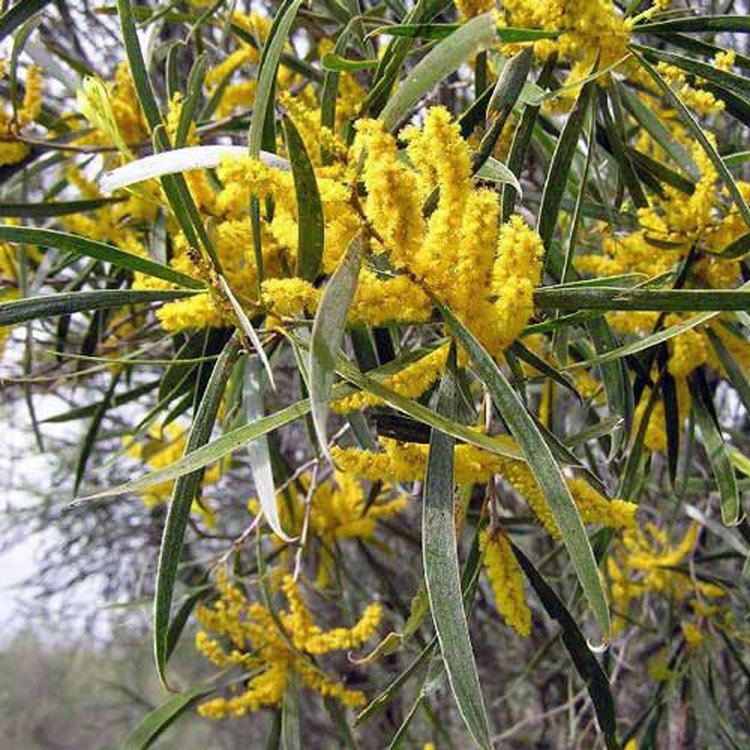
Description
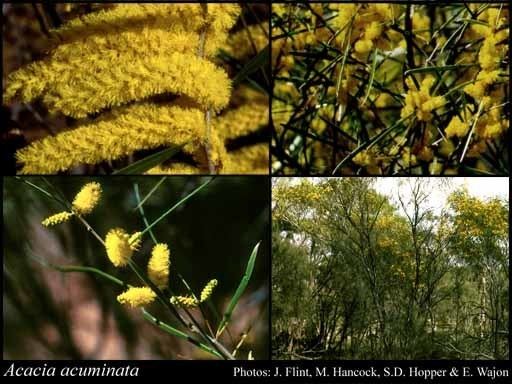
Acacia acuminata grows as a tall shrub or small tree growing 3-7m, In ideal conditions it may grow to a height of ten metres, but in most of its distribution it does not grow above five metres. As with most Acacia species, it has phyllodes rather than true leaves. These are bright green, around ten centimetres long and about two millimetres wide, and finish in a long point. The lemon yellow flowers are held in tight cylindrical clusters about two centimetres long, flowering occur late winter to spring. The pods are light brown and flattened, about ten centimetres long and five millimetres wide and are present during summer.
Three variations of A. acuminata are currently recognized:
A. acuminata (small seed variant)
A. acuminata (narrow phyllode variant)
A. acuminata (broad phyllode variant / typical variant)
Name origin
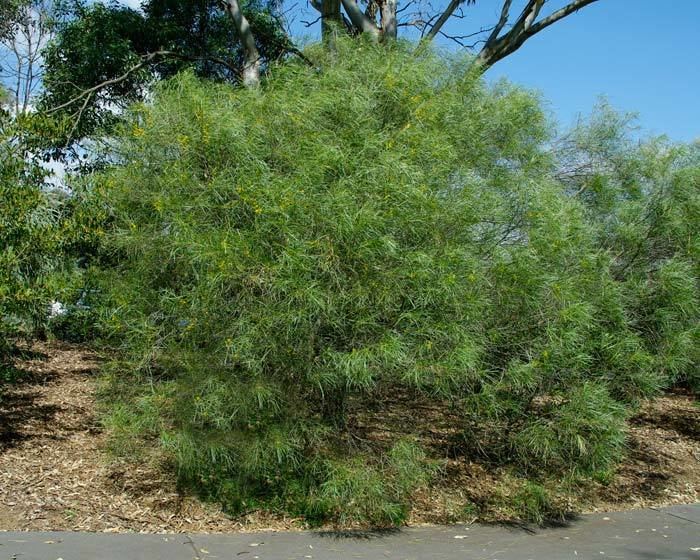
The species name acuminata comes from the Latin acuminatus, which means pointed or elongated. This refers to the long point at the end of each leaf. The common name "raspberry jam" refers to the strong odour of freshly cut wood, which resembles raspberry jam.
Growing conditions
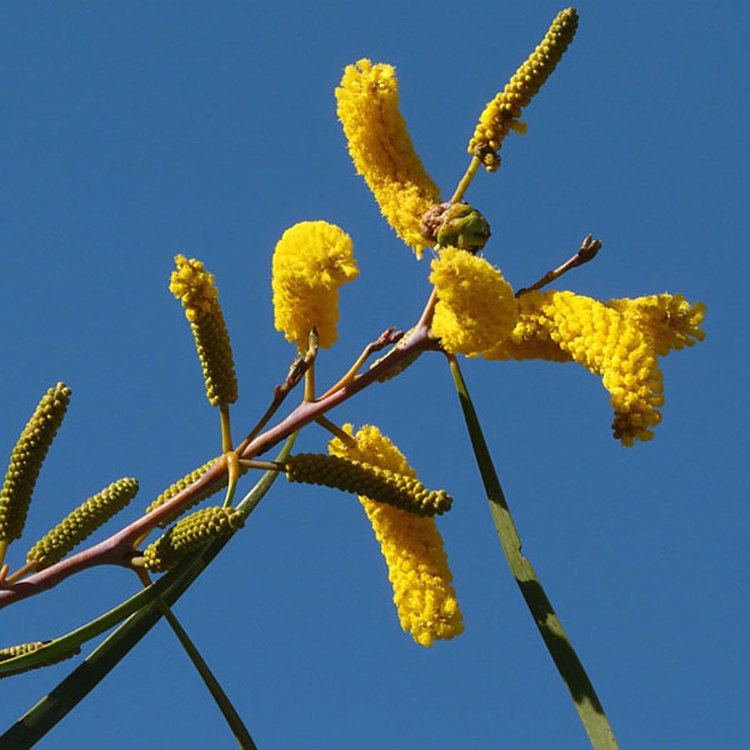
Acacia acuminata has high frost tolerance and medium salt tolerance. Acacia acuminata is tolerant of drought and frosts and is moderately salt tolerant. It requires at least 250mm/year (9.8in./year) average rainfall. Grows on seasonally dry duplex soils. Coppicing ability is absent or very low and it may be killed by fire. The wood has a distinct scent of raspberry jam and is very durable in the ground and favored for round fencing material; it has an attractive grain and is used for craft wood. A. acuminata comprises a number of informal variants (see above) and is the main host being used in Sandalwood (Santalum spicatum) plantations.
Uses

The wood is hard and durable, with an attractive, reddish, close grain. It has been used extensively for fence posts, for ornamental articles, and for high-load applications such as sheave blocks. The wood's "air dried" density is 1040 kg/m³. It is also being used as a companion/host tree with sandalwood (Santalum spicatum) plantations in the Wheatbelt region.
Subspecies
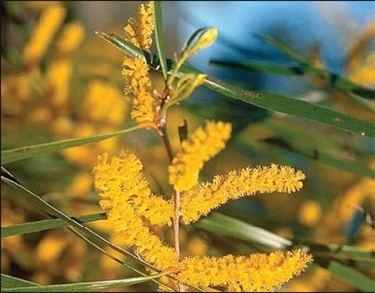
There are no currently recognised subspecies. The taxon previously called Acacia acuminata subsp. burkittii (Benth.) Kodela & Tindale is now considered to be a separate species and is called Acacia burkittii (Benth.)
Alkaloids
DMT in bark (up to 1.6%) and in leaves (0.6–1.0%) with some ß-carbolines, young leaves mainly containing tryptamine; 0.72% alkaloids from leaves and stems, mostly tryptamine.
Broad-leafed form gave 0.72% total alkaloid and narrow-leafed form gave 1.5% total alkaloid. Both collected Oct. White 1957 Broad-leaf A.acuminata phyllodes resulted in 51% MTHBC, 32% DMT, 16% tryptamine, 0.5% Harman, 0.4% 3-methyl-Quinoline (not verified), 0.3% N-Methyl-PEA, and 0.1% PEA.
